There are many chances of accessing music on computers, due to the popularization of online music distribution and portable music players. This page introduces the studies related to music.

|
We use pictures and music in our daily lives as the situation demands. For example,
when using a mobile phone, you may set a different calling image or a ringtone when you receive a call from a particular person.
|
- K. Ohyama, T. Itoh, DIVA: An Automatic Music Arrangement Technique Based on Impressions of Images, Lecture Notes in Computer Science, Vol. 4569 (Smart Graphics 2007), pp. 178-181, 2007. (PDF)
As we have a greater opportunity to carry massive music data using the devices like portable MP3 players,
the selections of music have been diversified.
There's still plenty of room for creativity to develop a display list so-called "content browser" to show what kind of music you are carrying.
|
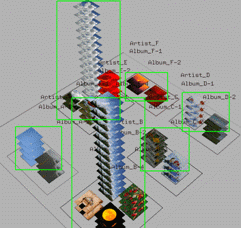
|
- R. Miyazaki, T. Itoh, 3D Contents Browser Using a Cluttering-Avoided Visualization Technique, IEEE Pacific Visualization Symposium, 2008. (PDF)
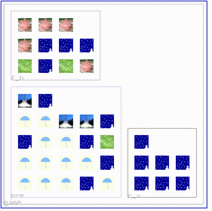 |
The icons of music files only have their file extensions, they would not express the genre or the impression of music.
We thought that it would be much fun if the music files are listed in different icons according to its impressions.
|
- M. Oda, T. Itoh, MIST: A Music Icon Selection Technique Using Newral Network, NICOGRAPH International 2007. (PDF)
- W. Machida, T. Itoh, Lyricon: A Visual Music Selection Interface Featuring Multiple Icons, 15th International Conference on Information Visualization (IV2011), 2011.
|
Other than using icons, there are a couple of ways to express music visually.
We propose the system 'MusCat' that generates abstract images based on the amount of characteristic of the music.
|

|
- K. Kusama, T. Itoh, MusCat: A Music Browser Featuring Abstract Pictures and Zooming User Interface, ACM Symposium on Applied Computing, Multimedia Visualization Track, pp. 1227-1233, 2011. (PDF)
 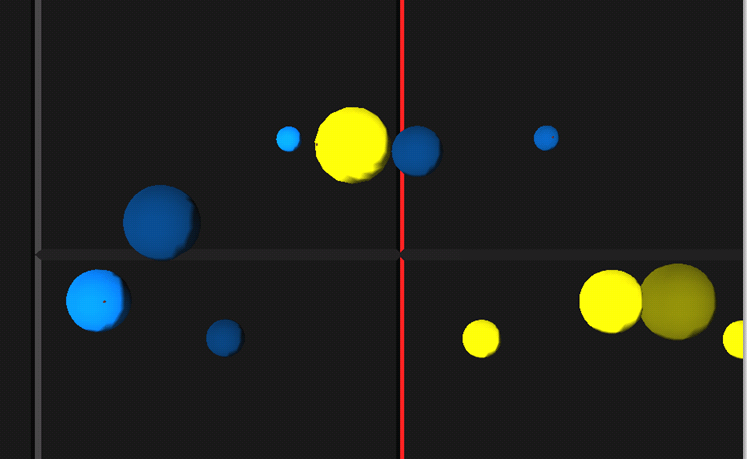
|
The objective of the music information visualization includes visualizing internal constitution of
one piece of music, in addition to listing many pieces of music.
This visualization method is valuable for assistance of composition and arrengement of music,
practiciing musical instruments and conducting, and education for beginners.
|
- A. Hayashi, T. Itoh, M. Matsubara, Colorscore - Visualization and Condensation of Structure of Classical Music, 15th International Conference on Information Visualization (IV2011), 2011.
- S. Nagatsu, T. Itoh, RoughNote: A Single-Tone-Note-Like Visual Representation of Classical Music, NICOHRAPH International 2011, 2011.
|
It is often the case that when people choose a piece of music,
they want to select one for the situation like 'music for driving' or 'music at the seaside'..
not specifying exact names of the musicians or tunes.
In these situations the criteria of the selections could be very subjective and greatly different in indivisuals. To satisfy the needs, we propose a music recommendation system 'MusiCube', in which computers properly learn users' preferences. Users are given pieces of music by MusiCube which applies Interactive Evolutionary Computation, and they are to decide whether the given tunes match to their purposes. Repeating the operations, MusiCube learns the preferences of users and the users can check the system's learning process and distribution of the given tunes with deployed icons in a square space where two features are assigned to X- and Y- axes. MusiCube is not only the music recommendation system, but also the system which creates users awareness about characteristics of the tunes they selected. |
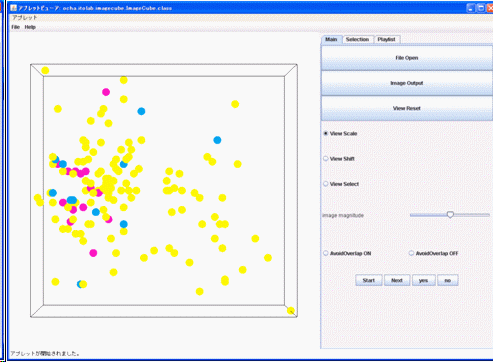
|
- Y. Saito, T. Itoh, MusiCube: A Music Selection Interface featuring Interactive Evolutionary Computering in Feature Spaces, IEEE Pacific Visualization 2011, Poster Session, 2011. (PDF)
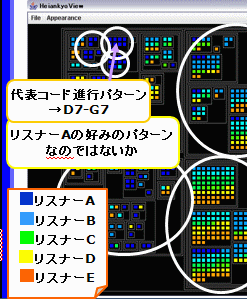
|
It is worth categorizing massive music data according to the implications of music.
|